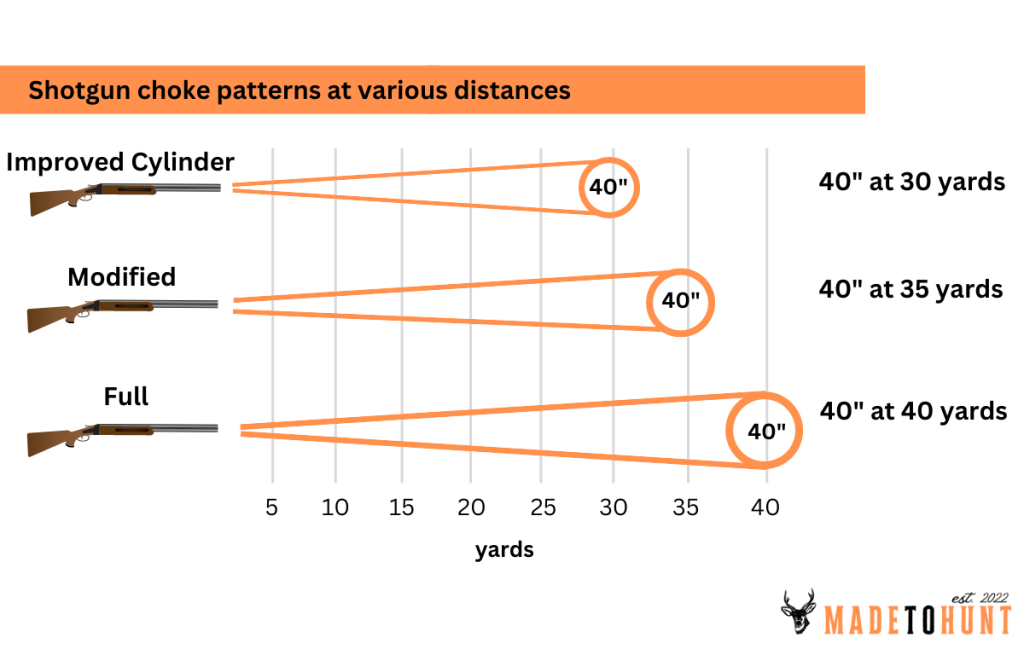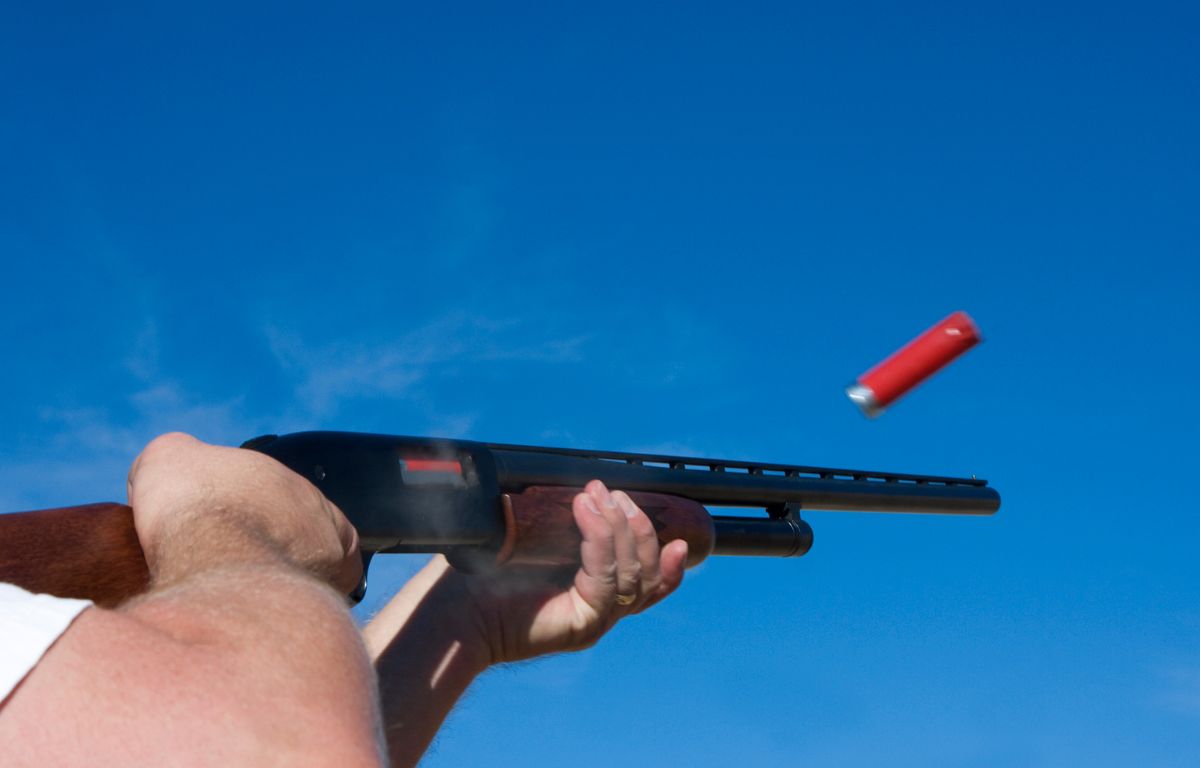Types Of Shotgun Chokes, Their Patterns And What To Use Them For
Are you going hunting for turkey or waterfowl and trying to figure out the best shotgun choke that you need? There are lots of different variables on finding out which choke to use.
In this article, we’ll look at the different types of shotgun chokes, shotgun choke charts and what type you need for each hunting situation.
Table of Contents
What is a shotgun choke?
A shotgun choke is a constriction at the end of the barrel of a shotgun, which controls the spread of the shot as it exits the barrel. The purpose of a choke in a shotgun is to change the pattern of the shot, making it either more open or more tight. This allows a shooter to adjust the spread of the shot to better suit the specific hunting or shooting situation.
A tighter choke will produce a smaller, denser pattern of shot, making it ideal for long-range shots at small targets like turkey or waterfowl. A more open choke will produce a larger, more dispersed pattern of shot, making it ideal for closer shots at larger targets like upland game birds such as pheasant.
Some shotguns have interchangeable chokes, which means you can change the choke depending on the type of hunting or shooting you are doing. A lot of hunters who use the same shotgun for turkey hunting and duck hunting will have different chokes for each scenario. This allows the shooter to optimize the spread of the shot for different hunting conditions and game species.
What are the different types of shotgun chokes?
There are several different types of shotgun chokes, each designed for a specific purpose. Lets look at some of the most common types:
Improved Cylinder
An improved cylinder shotgun choke is a type of choke that is typically used for shooting at close to medium range. It is designed to produce a spread of shot that is wider than a cylinder choke, but not as wide as a modified or improved modified choke.
It’s best for shooting at targets that are within 30 yards or so. It’s also a great option for shooting upland birds, such as pheasants, grouse, and quail.
Modified Choke
A modified choke is a step up from the improved cylinder, providing a tighter pattern that is well suited for medium range shots. This typically results in a slightly wider shot spread than an improved modified choke, but not as wide as a full choke. It’s best for hunting or shooting at medium range.
Full Choke
A full choke has the smallest constriction and exits the barrel in a tight and concentrated pattern. It’s designed to produce the tightest pattern of shot possible and typically used for long range shots such as turkey and waterfowl.
When using a full choke, the shot will spread less and will retain more energy, making it more effective at longer ranges. The tighter pattern of shot also makes it more likely that a shooter will hit a small target, like a turkey’s head or a duck’s vital organs.
Extra-Full
The extra full or super full choke is similar to the full choke but is designed for specific hunting like turkey, goose, duck hunting and often used in competition shooting. It is tighter than a full choke and is typically used for shots at 40 yards or more. These are used by a lot of turkey hunters and sometimes referred to as “gobbler getters.”
Skeet
This choke is used for shooting clay pigeons at close ranges. It provides a relatively open pattern that allows for a high degree of lead on fast-moving targets.
Cylinder
The cylinder is the most open shotgun choke and is typically used for shooting at extremely close ranges or for shooting birds that are directly overhead. They are also used by law enforcement agencies for service guns.

You can download the PDF printout below.
What is the best shotgun choke for turkey hunting?
When turkey hunting, you are most likely not going to shoot a turkey from less than 15-20 yards. Turkey’s have very good eye sight and it’s hard to get that close to them. You have the best chance of getting close to a turkey while in a ground blind that conceals you all around.
In order to shoot a turkey at long distance, it’s recommended to use a full choke for turkey hunting to get the closest and tightest pattern in order to hit them in the head.
What is the best shotgun choke for waterfowl hunting?
As the same with turkey, waterfowl have good eye sight as well. You must be concealed well in a ground blind to have a good shot at ducks or geese.
To shoot ducks or geese, it’s recommended to use a full choke to maintain a tight pattern to target the waterfowl’s vital organs.
What are the notches on a shotgun choke for?
The notches are how the shotgun restricts the pellets into a tighter or open pattern. A lower notch count will make the pattern tighter. A higher notch count will make the patter open and not as restrictive.
How do you install a shotgun choke?
It’s very easy and simple to install a shotgun choke:
- Make sure the firearm is unloaded and pointed in a safe direction. This is the most important step. Safety should be most important. I always check it twice.
- If a choke is already installed, remove the existing choke by unscrewing it counterclockwise. Read the manufacturers instructions if unable to get it removed.
- Take the new choke and align it with the threads on the barrel and screw it securely into place. Make sure the choke is tight and secure before using the shotgun.
Shotgun chokes have come a long way since first introduced in 1827. You have to try the different types of chokes and figure out what works best for your hunting situation.
What shotgun chokes do you have in your hunting arsenal? Do you have a favorite?
For more hunting tips, check out this article about deer hunting for beginners.








